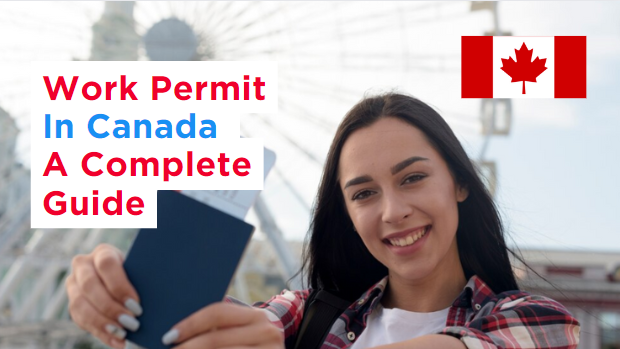Understanding Canada Work Permit – A Comprehensive Guide – Canada is known for its inclusive policies, diverse population, and robust economy. This makes it an attractive destination for professionals seeking new opportunities.
If you’re considering working in Canada, obtaining a work permit is a crucial step. This article will guide you through the intricacies of Canada work permits, including types, eligibility, application process, and more.
1. Types of Work Permits
Canada offers several types of work permits depending on the nature and duration of the work. The primary categories are:
Employer-Specific Work Permits: These permits are job-specific, meaning you can only work for the employer listed on your permit. They typically include details such as the employer’s name, location, and the duration of employment.
Open Work Permits: Open work permits are not job-specific and allow you to work for any employer in Canada, except for those who are ineligible or involved in certain activities such as escort services, erotic dance, or erotic massages. There are several sub-categories under open work permits, including:
- Post-Graduation Work Permit (PGWP): For international students who have graduated from a designated learning institution.
- Spousal Open Work Permit: For spouses or common-law partners of skilled workers or international students.
- International Experience Canada (IEC): For youth from countries that have a reciprocal agreement with Canada.
2. Eligibility Criteria
The eligibility requirements for a work permit vary based on the type of permit. However, some general criteria include:
Employer-Specific Work Permit Requirements:
- A job offer from a Canadian employer.
- A positive Labour Market Impact Assessment (LMIA) from Employment and Social Development Canada (ESDC), unless exempt.
- Proof of your ability to meet the requirements of the job.
Open Work Permit Requirements:
- Proof of your relationship to a skilled worker or student in Canada (for spousal permits).
- Enrollment in or graduation from a Canadian educational institution (for PGWP).
- Meeting the age and other criteria specified under IEC for participating countries.
3. Labour Market Impact Assessment (LMIA)
An LMIA is a document that a Canadian employer may need to obtain before hiring a foreign worker. The purpose of the LMIA is to ensure that hiring a foreign worker will not negatively impact the Canadian labor market.
A positive LMIA indicates that there is a need for a foreign worker to fill the job and that no Canadian worker is available to do the job.
Exemptions from LMIA: Certain categories of work permits are exempt from requiring an LMIA. These include:
- International Agreements: Such as NAFTA.
- Intra-Company Transfers: For employees transferring within the same company.
- Public Policy, Competitiveness, and Economy: Certain professionals, researchers, and performing artists.
4. Application Process
The process of applying for a work permit involves several steps, which may vary depending on the type of permit and the applicant’s country of residence. Here is a general overview:
Step 1: Job Offer and LMIA
- Secure a job offer from a Canadian employer.
- The employer applies for an LMIA, if required.
Step 2: Gather Required Documents
- Completed application forms.
- Proof of job offer and LMIA.
- Passport copies.
- Proof of qualifications and work experience.
- Language test results (if applicable).
- Medical exam (if required).
- Police clearance certificate.
Step 3: Submit the Application
- Apply online or at a visa application center.
- Pay the application fee.
- Provide biometric information if required.
Step 4: Wait for Processing
- Processing times vary by country and type of permit.
- You may be asked to provide additional information or attend an interview.
Step 5: Receive the Work Permit
- If approved, you will receive a Port of Entry (POE) Letter of Introduction.
- Upon arrival in Canada, present this letter to the border services officer to receive your work permit.
5. Processing Times and Fees
Processing times for work permits can vary significantly based on the applicant’s country of residence and the type of permit. Typically, processing can take from a few weeks to several months.
Applicants are advised to check the latest processing times on the Immigration, Refugees and Citizenship Canada (IRCC) website.
The fees for work permits also vary:
- Employer-Specific Work Permit: CAD $155
- Open Work Permit: CAD $100 (in addition to the base fee)
- Biometric fee: CAD $85 per person or CAD $170 per family
6. Rights and Responsibilities of Work Permit Holders
Rights:
- Work in Canada for the employer specified in your work permit.
- Change employers (with a new permit if employer-specific).
- Enjoy the same workplace protections as Canadian workers.
Responsibilities:
- Comply with the conditions of your work permit.
- Maintain valid status in Canada.
- Leave Canada upon the expiry of your work permit, unless renewed or extended.
7. Pathways to Permanent Residency
Working in Canada on a temporary work permit can be a stepping stone to permanent residency. Several immigration pathways are available for foreign workers:
Express Entry System: The Express Entry system manages applications for three economic immigration programs:
- Federal Skilled Worker Program.
- Federal Skilled Trades Program.
- Canadian Experience Class.
Having Canadian work experience can significantly boost your Comprehensive Ranking System (CRS) score, increasing your chances of receiving an Invitation to Apply (ITA) for permanent residency.
Provincial Nominee Programs (PNP): Many provinces and territories have PNPs that target workers with specific skills, education, and work experience. Some PNPs require a job offer from a local employer.
Quebec Immigration Programs: Quebec has its own immigration programs, including the Quebec Skilled Worker Program (QSWP) and the Quebec Experience Program (PEQ), which cater to workers with specific skills and experience.
8. Challenges and Tips for Applicants
Challenges:
- Navigating the complex application process.
- Meeting the specific requirements of job offers and LMIAs.
- Long processing times and uncertainty.
Tips:
- Start your application process early to account for potential delays.
- Ensure all documents are complete and accurate to avoid processing delays.
- Consider seeking professional immigration advice if needed.
9. Conclusion
Securing a work permit is a vital step for anyone wishing to work in Canada. Understanding the types of permits, eligibility criteria, and application process can help you navigate this complex but rewarding journey.
With careful planning and preparation, you can successfully obtain a work permit and embark on your new career in Canada. “Understanding Canada Work Permit – A Comprehensive Guide”










